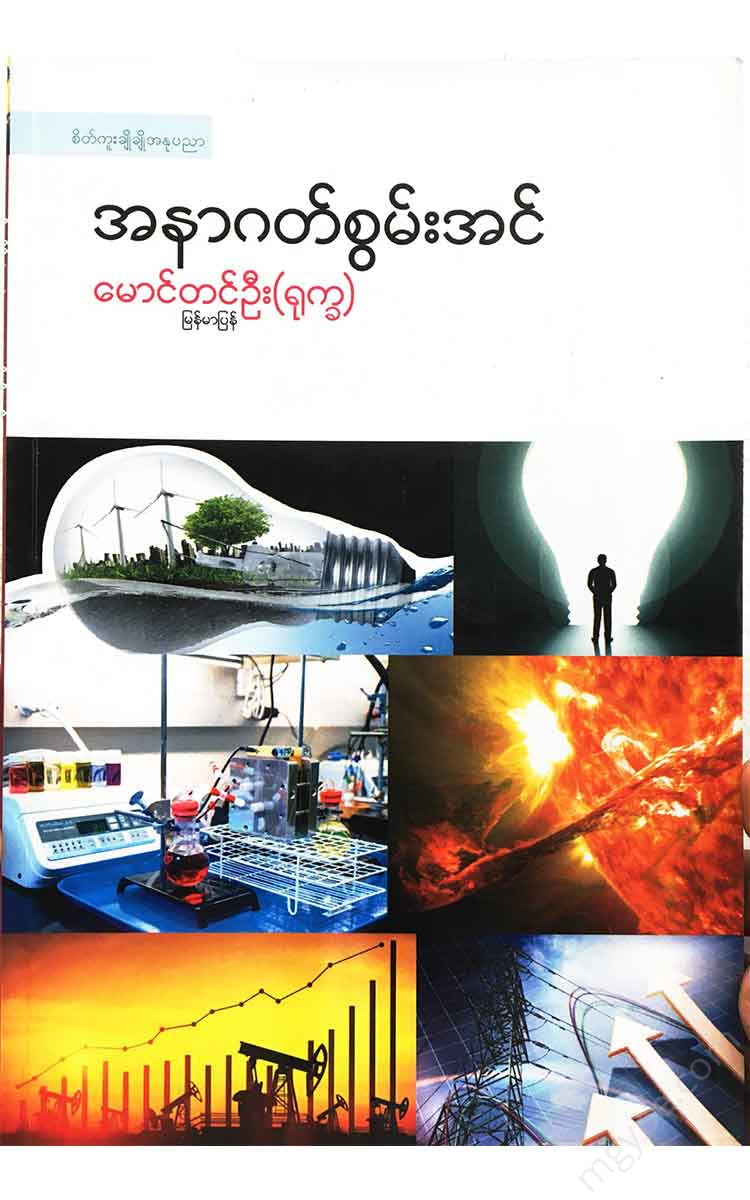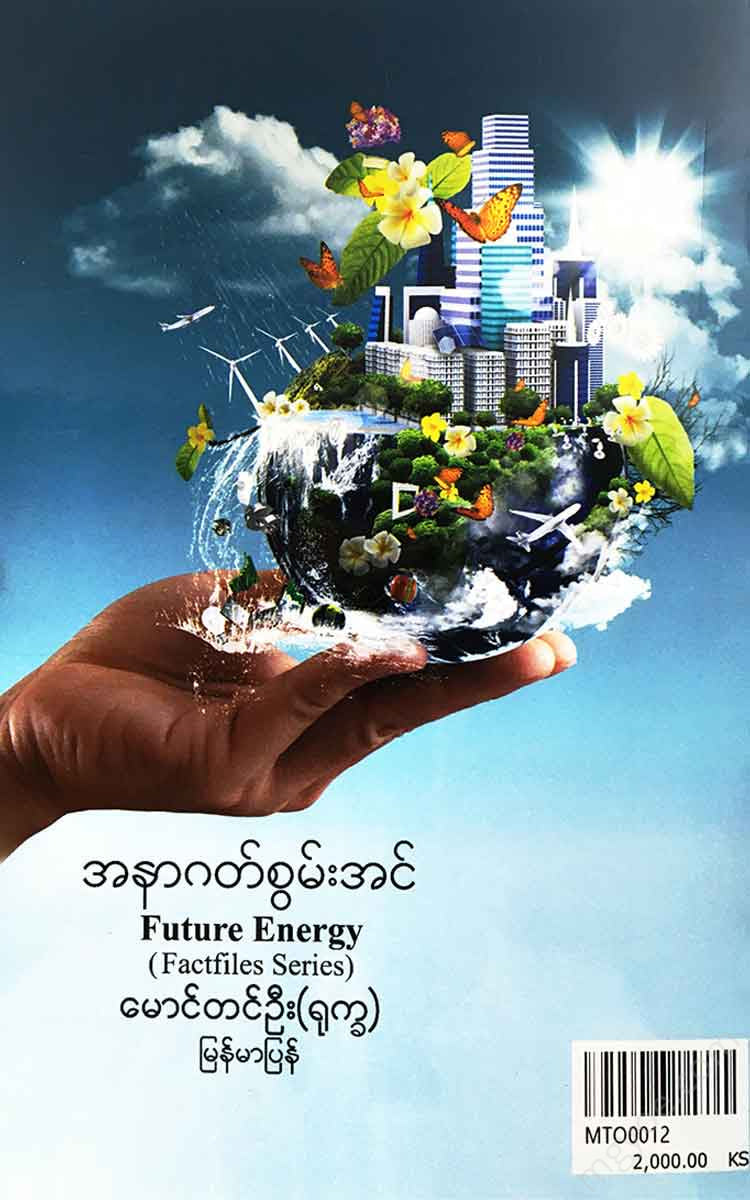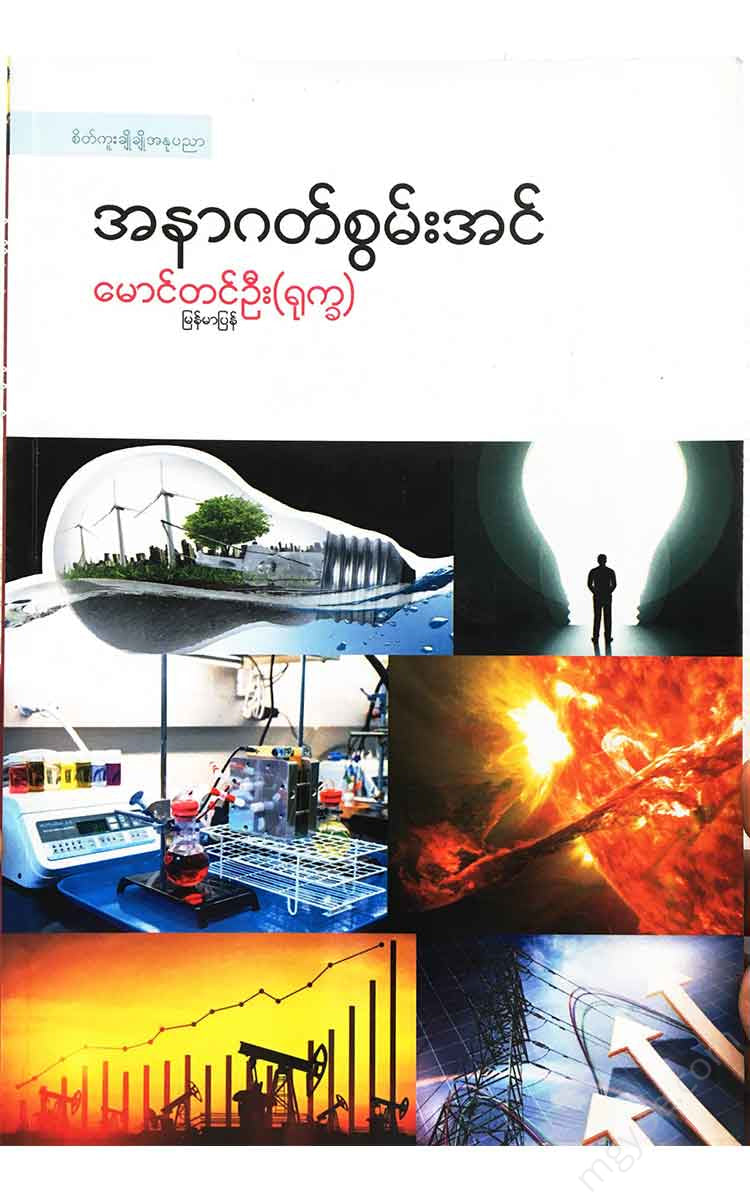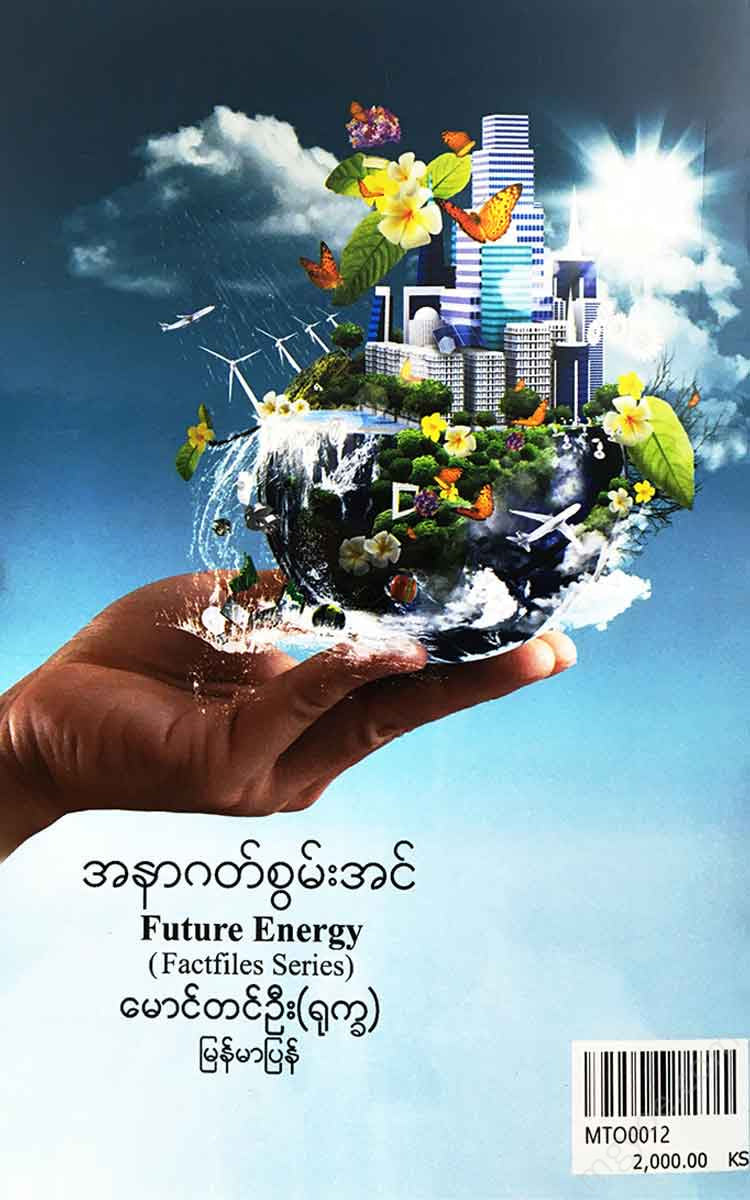စိတ်ကူးချိုချိုစာပေ
Maung Tin Oo (Rukkha) - Future Energy
Maung Tin Oo (Rukkha) - Future Energy
Couldn't load pickup availability
Chapter (1)
Today's energy
The plane was already soaring into the sky as I felt it vibrate as it sped along the runway. The plane’s engines were burning 1.5 liters of fuel per second as it flew over the Istanbul sky. It was seven o’clock in the evening in Istanbul, and the city’s 13 million residents were already feeling the chill of a February evening. As I sat in the plane, I thought about how some of the city dwellers were returning home from work by private cars, buses, trains, and boats.
When you look out the window of an airplane at Istanbul below, you can see factories, streets, shops, houses, and the Marmara Sea. The city's twinkling lights are a beautiful sight at night, but think about how much energy it takes to keep them lit. And where does that energy come from?
About two hours after we got off the plane , I arrived at the front door of my house in Adana, a city in eastern Turkey, and opened it. I noticed the smell of food cooking in the kitchen and heard the sound of the TV. I could see the red light on the telephone in the house flickering on and off. In fact, some of the machines throughout the house were doing their jobs, some were receiving information, some were doing laundry, some were cooking food, some were keeping the room warm.
You too might be reading a book at home. Are you keeping the lights on in your room? Or are you listening to music? How many machines are there around you?
As you read this, billions of electric light bulbs, computers, televisions, and refrigerators are in use around the world. There are also 25 million cars on the road, and 700,000 people are flying from one place to another. Energy is needed to carry out all of the social activities described above. This energy is obtained from fossil fuels such as coal, oil, and natural gas. If we continue to use fossil fuels at this rate, we will eventually run out of energy. If that happens, where will we be able to get the energy we need in the future? What changes will the lack of these fuels have in our world?
Chapter (2)
Fossil fuels
For thousands of years, humans have used their hands to make things for themselves. They have also used the power of water, wind, and animals to travel, move, and build. Most people also used wood as fuel to heat their homes and cook their food. In October 1765, a young engineer named James Watt invented a machine. The machine that changed the world was the steam engine, invented by James Watt.
This is how James (Switzerland)'s steam engine worked. Water in the engine was heated with coal to produce steam. When the steam entered the engine, it caused the movement of the engine parts. Although steam engines had been invented before 1765, the steam engine invented by James (Switzerland) was superior to the previous steam engines and was capable of driving even the largest machines installed in large factories. After James (Switzerland)'s steam engine was invented, large factories were built all over the country.
Over the centuries, factories have developed new machines that can be used in various industries. These new machines have been able to produce a variety of new products that people need to buy and use. Our homes have also become filled with new names for products. In many countries, thousands of rural people have left their villages and come to the cities where the factories are located to work in the big factories. The poor factory workers have to handle these machines in the workplace, which can be dangerous not only for their bodies but also for their lives. They have to work for many hours in this dangerous environment. Therefore, the life of the poor factory workers can be said to be very difficult. The air in the cities where the factories are located is also filled with smoke from the burning of coal.
In 1804, the first steam-powered railway was invented. By the 1850s, steam-powered railways and ships were carrying passengers around the world. In the 1880s, the first steam-powered power plants were built. Coal was used as fuel to produce the steam needed to drive the steam turbines in these power plants. By using coal as fuel, enough steam was available to drive large machines, such as steam turbines. These steam turbines, in turn, drove generators that produced electricity. The electricity generated by the generators was used to light streets and homes.
In 1885, German engineer Karl Benz invented the first automobile. His car was equipped with a new type of engine that ran on gasoline. The gasoline burned inside the engine to power the mechanical parts, making gasoline engines smaller than steam engines. Within 20 years, automobile factories were producing thousands of cars each year, and the emergence of such cars also improved road transport. Most of the cars produced at that time were gasoline-powered. Gasoline was made from crude oil. In 1903, Orville and Wilbur Wright flew the world's first gasoline-powered airplane.
Human inventions such as the steam engine, electricity, and automobiles have revolutionized the way people live on Earth. They have also changed the types of fuels we use to power our lives. Today, about 87 percent of the world's energy comes from coal, oil, and natural gas.
Introduction
Future energy
Natural gas is transported around the world in huge pipelines. Oil and coal are transported from country to country in huge ships, traveling thousands of miles. When we grab a cold drink from the fridge or turn on a light switch, we don't think about how much energy we are using. That's because energy is always there when we need it.
The clocks are ticking, and time is ticking. | At the same time, the energy sources we use all the time, such as oil, coal, and gas, are also running out. One day, just as the hours of the day, made up of non-stop clocks, run out, these energy sources will also run out. Scientists are trying to find ways to get energy for the future. Some of the discoveries that scientists make while searching for ways to do so may surprise you. In the future, you will see cars that sail on the wind, turbines that are located on the bottom of rivers and are powered by the energy that comes from the river, and machines that are powered by the heat of the steam generated by humans. Such a future is not far away. Not too long.









